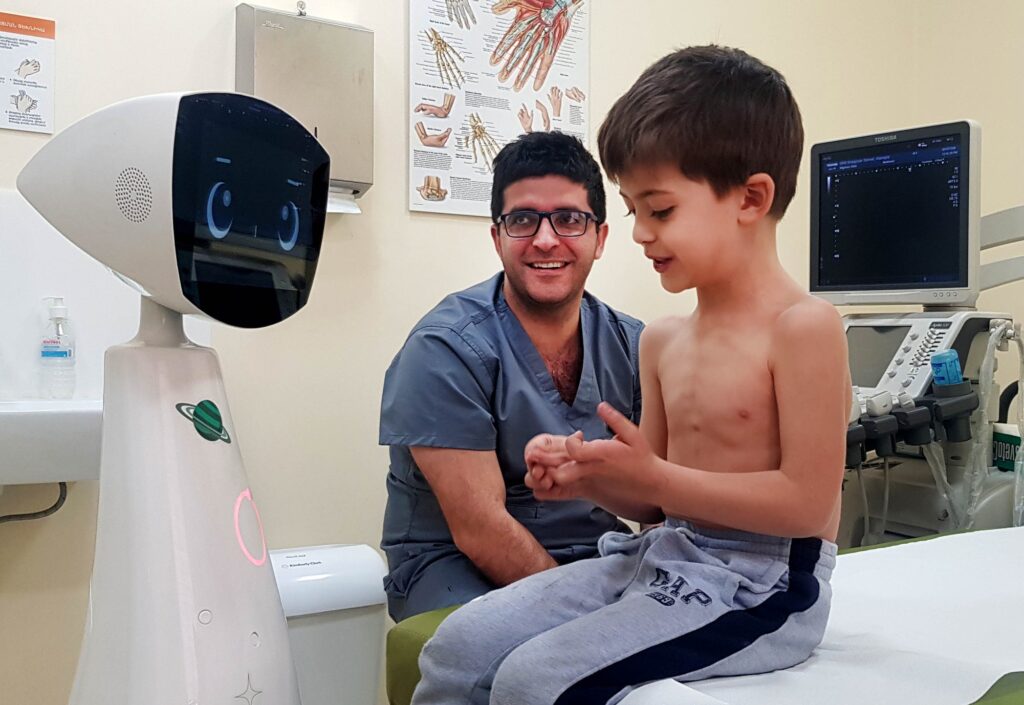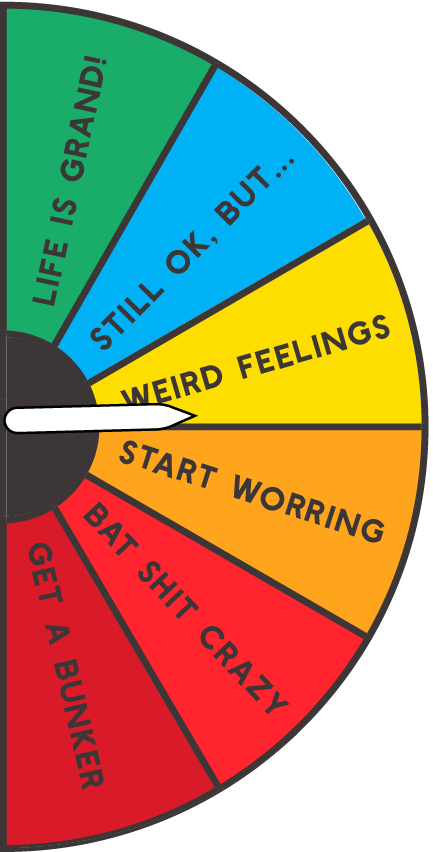Volcanoes are erupting in The Philippines, but on-fire Australia received some welcome rain. The Iran war cries have been called off and The Donald’s military powers are about to be hamstrung by the Senate. Meanwhile, his impeachment trial is starting, and we’re all on Twitter for a front-row seat.
Robin the Robot
An AI creation brings smiles to the faces of sick children—and plugs the current gap of care providers

Hospitals can be scary places. For children, the time spent away from family can be especially traumatic. The balloons and dolls that hospitals throw into their pediatric wards do little to change the experience most kids undergo. Until recently, that is. Enter Karen Khachikyan, a bright engineer from Armenia whose invention Robin the Robot has been putting smiles on the faces of children around the world—with yet uncharted applications for geriatric patients and others as well.
Simply put, Robin is the first emotionally intelligent hospital robot. Standing a little under four feet tall, it bears a streamlined if uncanny resemblance to the robot maid from The Jetsons. Its big friendly screen/face is the key to making kids feel at home, like a 24/7 pal that they can consult at will. Dr. Shant Shekherdimian—a doctor at the UCLA pediatrics department and one of Robin the Robot’s earliest adopters—is a fan of the robo-pal: “Robin provides a near-human experience at a time when we are limited in these relationships and companionships, particularly in the hospital. The ability to provide our pediatric patients with this type of social companionship is compelling.” Robin’s parts are manufactured in Armenia, then shipped to the West, where hospitals can order Robin on a subscription basis.
Khachikyan, who holds a PhD in Electrical Engineering and Robotics, founded Expper Technologies in 2019 with the mission to empower humanity through transformative technologies within the healthcare industry. Robin, known in the biz as an “autonomous care extender,” was created in part to fill a shortage in human health care providers. Made of recyclable bioplastic that can easily be sterilized with ultraviolet light or other disinfectants, Robin can be programmed to respond to almost any query.
As with many inventions, there’s a touching human aspect to this story. When Khachikyan was a child, his disabled grandmother lived with his family. Khachikyan’s mom worked full time, so the responsibility of caring for his grandmother often fell to the young boy. It made him realize the importance—and difficulty—of finding top-flight care: “The truth is, there are millions of people in the world like my grandmother, who need quality caregivers. I always knew that I would dedicate myself to this in the future.”
How does Robin the Robot provide such good care? First, by listening. Robin explains upcoming procedures to children, jokes and plays with them. Using a Markov Decision Process–a mathematical framework for modeling decision making in partly random situations–Robin’s objective is to maximize positive emotions by analyzing the emotions from patients’ facial expressions. The cutting-edge technology allows Robin to identify a patient’s mood and adjust its behavior to their emotional conditions. Robin’s memory network stores key points from interactions with each child, remembers them and later brings them back up in conversations that flow as close to human ones as possible.
Data so far seem to point to an all-around success story. A two-month pilot study involving more than 100 young patients at Wigmore Clinic, Nork Marash Hospital, and Avanta Clinics in Armenia reported that children’s appetites increased and general welfare was noticeably improved by daily interactions with Robin the Robot. And at UCLA Mattel Children’s Hospital, Dr. Justin Wagner, a pediatric surgeon and co-leader of the Robin project, underlines that while children may be physically isolated, they need not feel the same way psychologically: “Negative feelings are even stronger during this time,” Wagner noted. “We hope to integrate Robin as a member of the team, augmenting our ability to give children contact, attention, and companionship.” Results from a recent Mattel study demonstrated that 90% of parents who had a visit with Robin said they were “extremely likely” to request another visit. Children reported a 29% increase in positive affect after a visit with Robin, compared with children who had tablet visits and a 43% decrease in positive affect. Other benefits reported include a greater display of intimacy and interactivity during play, increased control over their hospital experience, and the formation of a new, trusting friendship.
With geriatric patients, Robin’s goal is to utilize evidence-based interventions to improve cognitive measures, lower depression symptoms, and ultimately increase the quality of life for the elderly, who often perceive Robin as a loving grandchild.
It’s important to emphasize that Robin the Robot isn’t just a feel good story about one clever scientist who found an ad hoc solution to a pressing healthcare issue. Khachikyan thought long and hard about how to best apply technology to improving the daily lives of people and how to use technology to advance progress in the world. Studies indicate a $70 billion market for Robin the Robot! Taken in the larger context of things, Robin is a breakthrough innovation in the healthcare industry that can significantly change the way care is being delivered worldwide. Khachikyan explains that he and his colleagues at Expper “aspire to make Robin a standard of care and make quality caregiving accessible to everyone.” In America, Robin is available in three states: California, Texas, and Colorado. Other applications include patients with Alzheimer’s and dementia, home care—and why not others with a whole series of depressive symptoms? For these patients and maybe millions of others as well, the sight of a smiling shiny robot sent straight from Jetsons’ central casting may be exactly what the doctor ordered.


